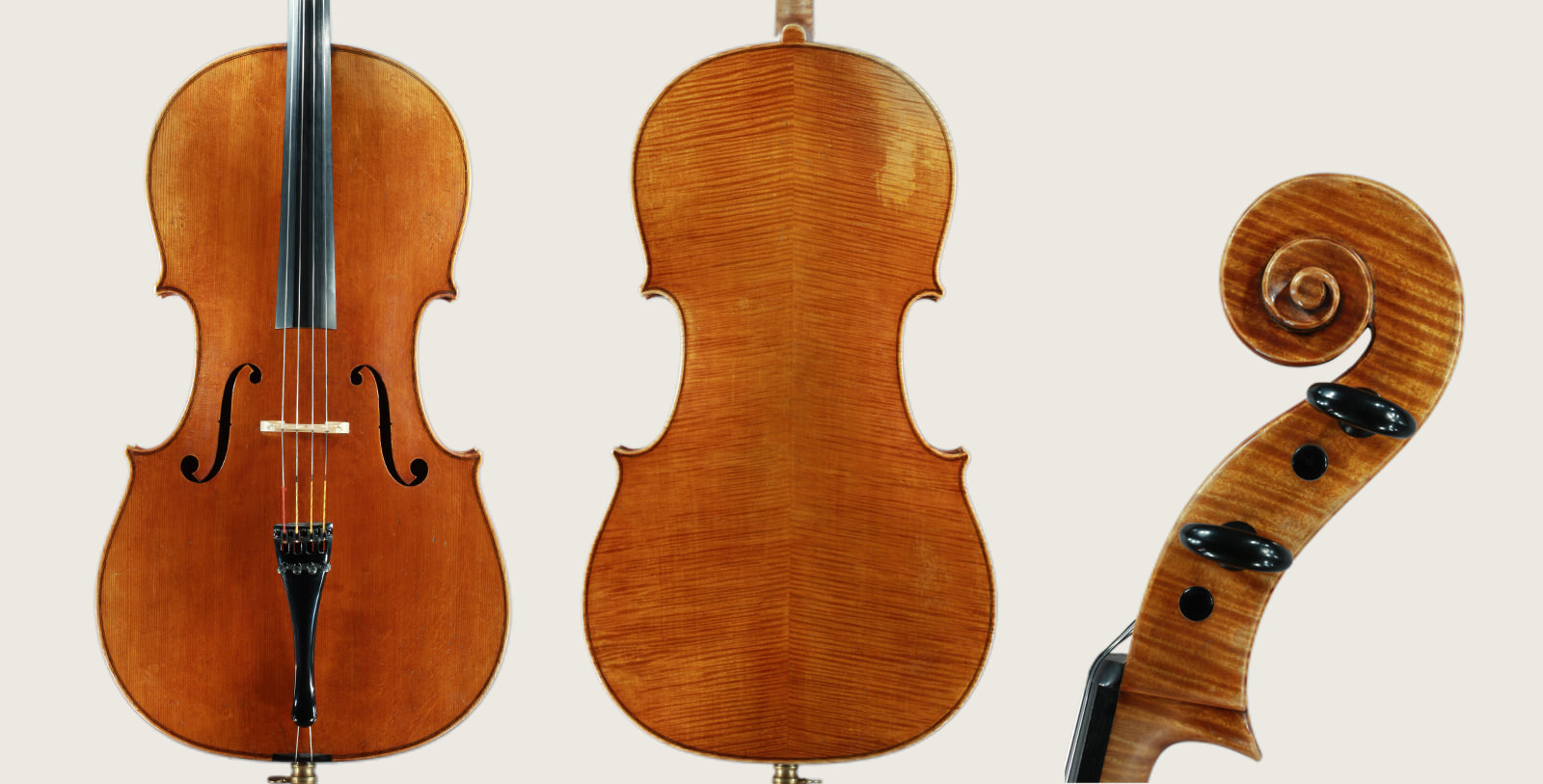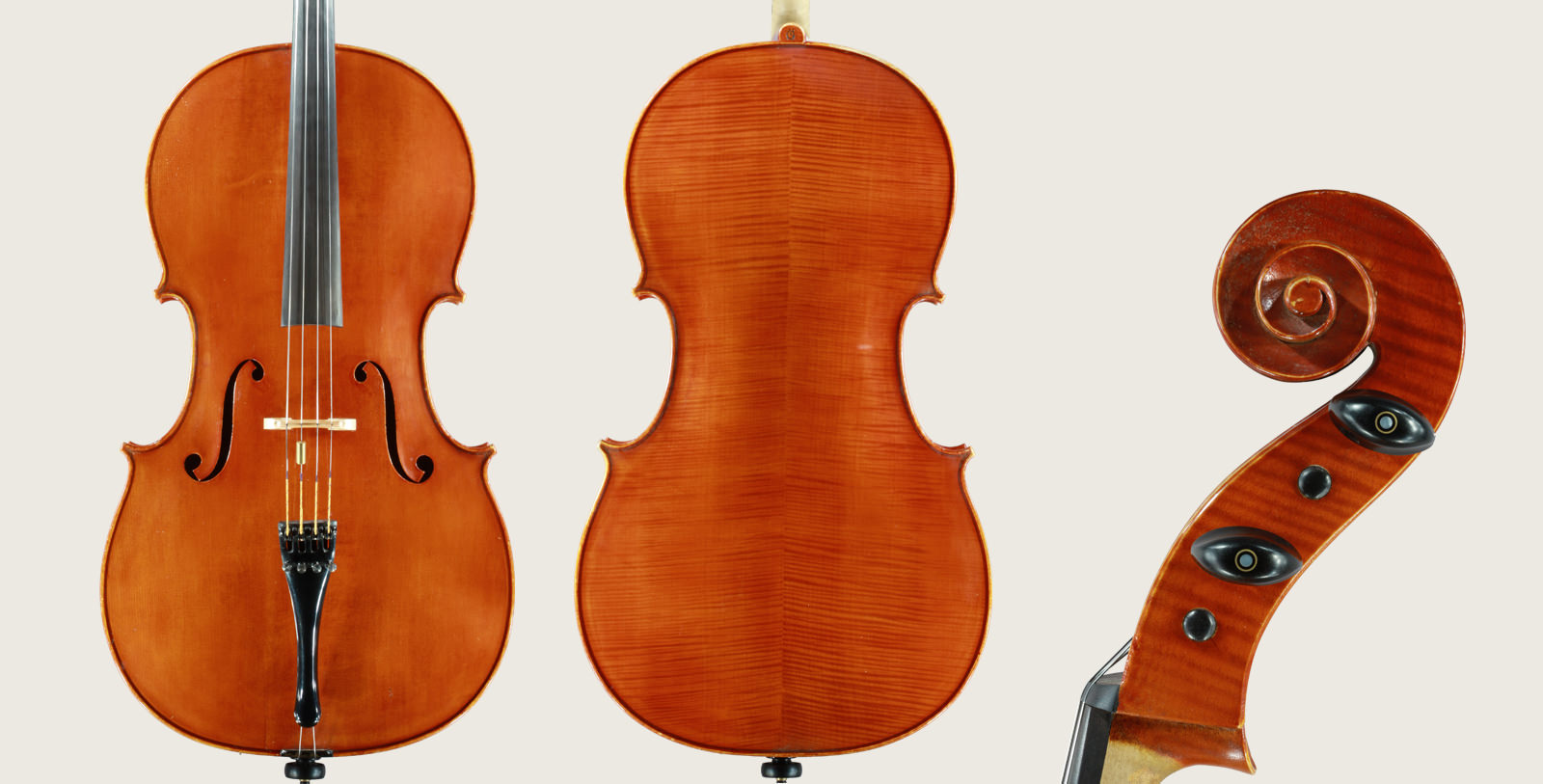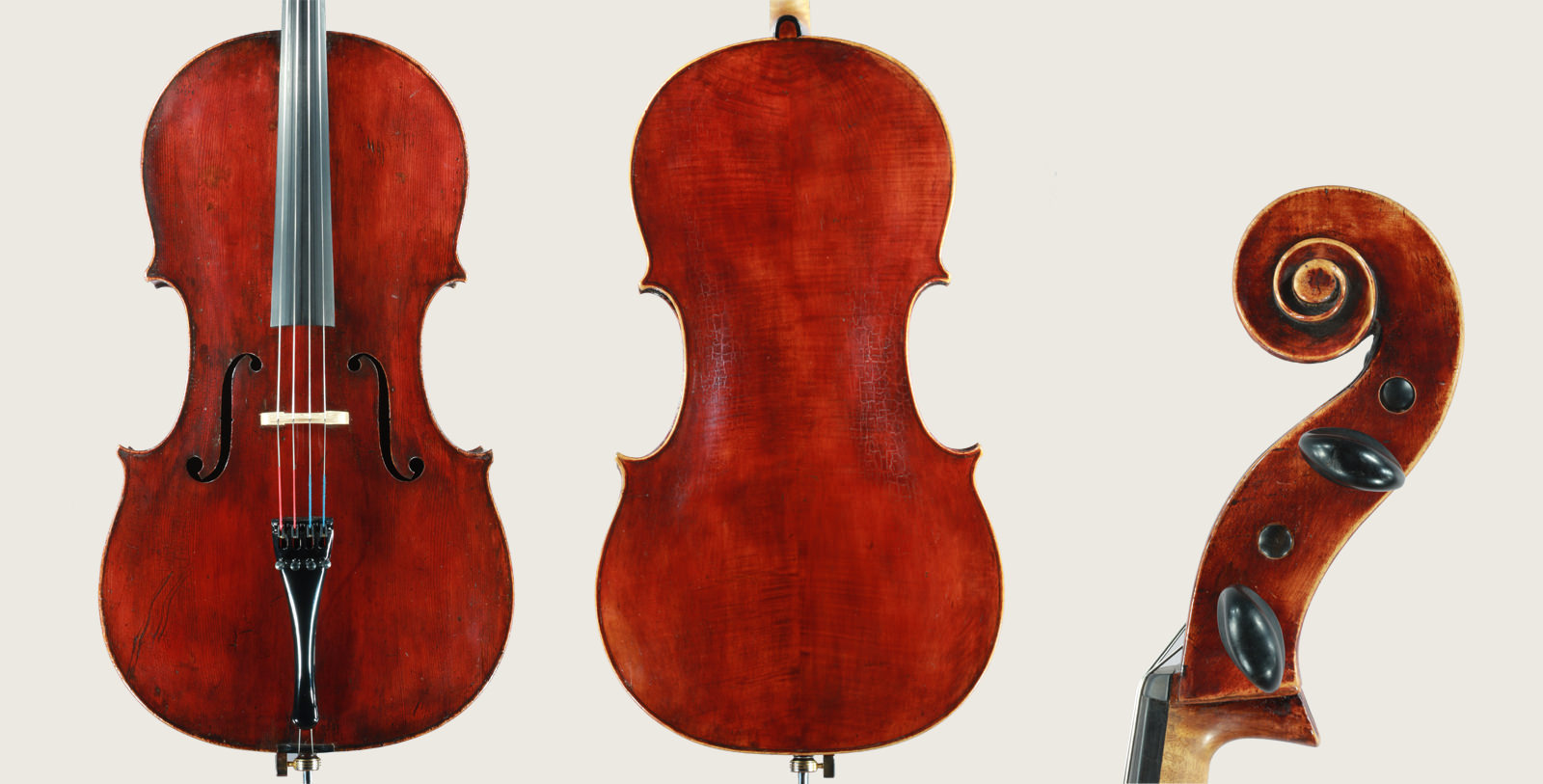
Ulrich Fuchs
fine stringed instruments
The following are four examples of instruments that reflect my philosophy concerning workmanship, sound quality and value. For information about my complete current inventory, please contact me personally:
Emanuel Adam Homolka
Violoncello, Velvary, 1826
E.A. Homolka is one of the most important 19th century Bohemian violinmakers. Homolka exclusively modeled his work after the classic Italian instruments without merely copying them. He experimented with wood thickness and used a smooth, thinly applied varnish that is nevertheless durable. His instruments are highly regarded for their outstanding sound. Cellos made by him are extremely rare.
Wilhelm Herrmann Hammig
Violoncello, Leipzig, 1880
W.H Hammig is one of the best representatives of the German School of his era. Instruments from his first period look like a German interpretation of the cellos from J.B. Vuillaume. Even the sound is very French, but the response is easier than many of Vuillaumes. The instrument combines first class material with perfect craftsmanship.
Mario Gadda
Violoncello, Mantua, 1986
Gadda is one of the best Italian copyists of the second half of the 20th century. Probably a fairly large number of his instruments are sold under more prestigious names. This particular cello is not built in a copy stile. It is based on a Balestrieri model which he often used. With the brilliant resonance of its A string and a robust, earthy bass sound, it makes for an impressive cello. Just like their classic predecessors, semi-modern Italian instruments are very much much sought after at auction, and accordingly, the prices have increased. In comparison, the instruments made by Gadda, who died in 2007, are still relatively cheap; thus excellent investments.
John Morrison
Violoncello, London, 1795
This cello is a typical English model of the time, with a back length of 73.7 cm at a stop length of 40.0 cm. Like his more famous contemporaries, B. Banks and W.Foster, Morrison made instruments crafted after Italian models. He applied a beautiful dark red oil varnish, and, contrary to Lütgendorff’s assessment, the work is much more than mere craftsmanship. When it comes to English violin makers, Morrison is still a best kept secret.




